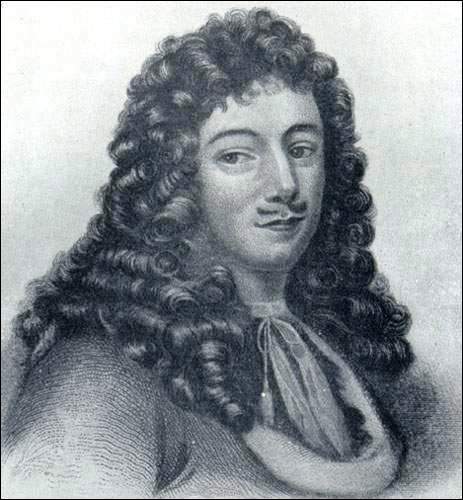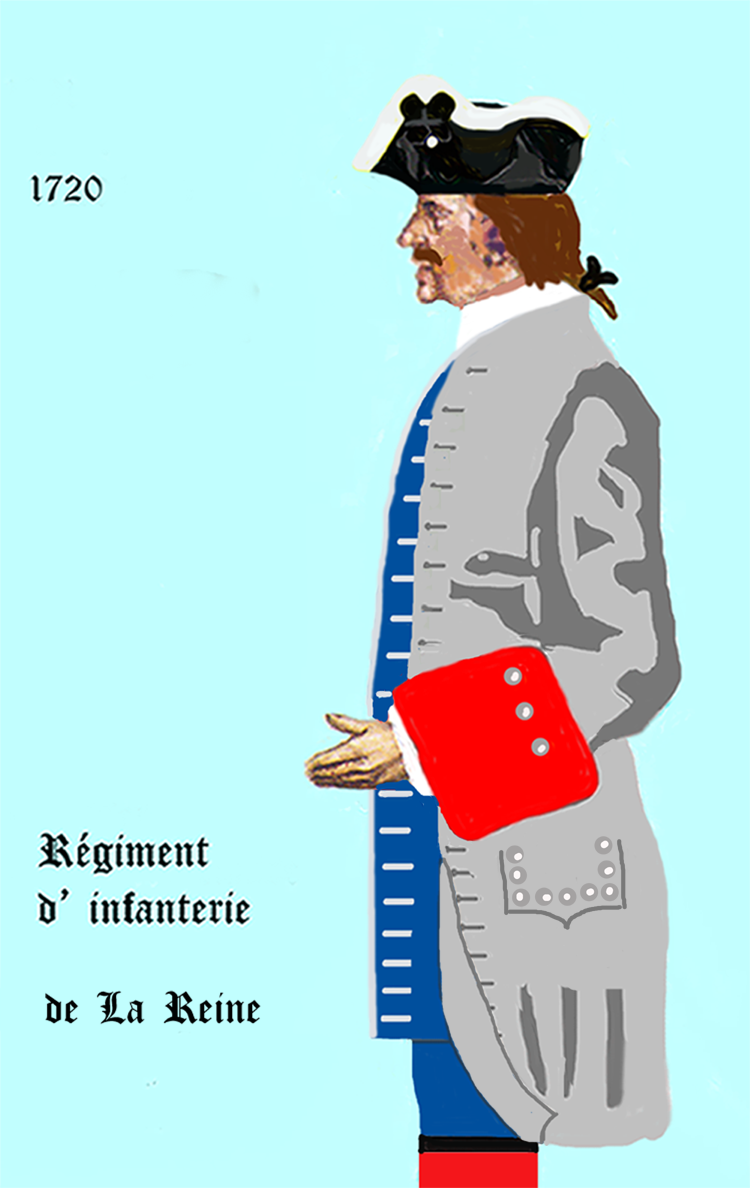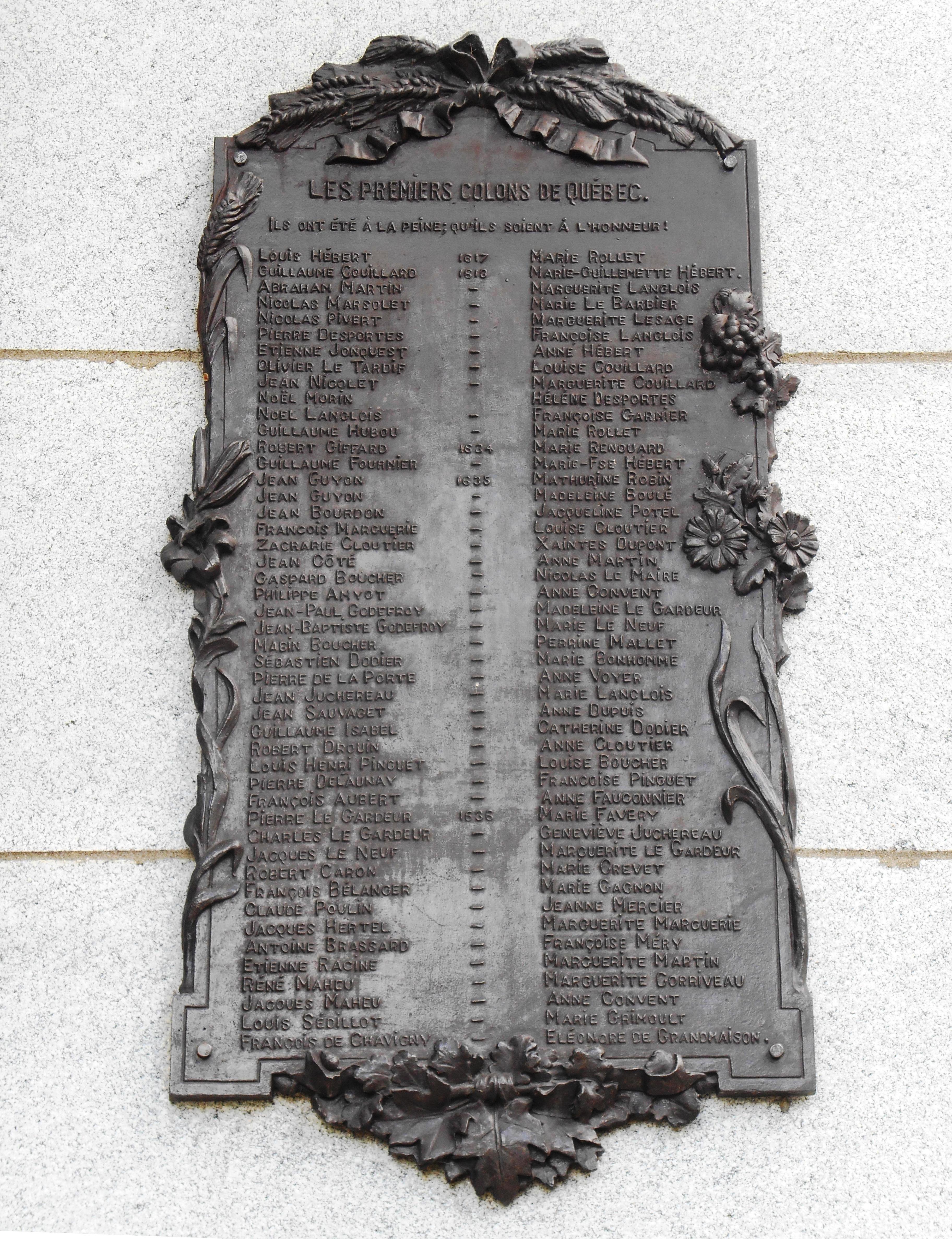|
Duke Of Artois' Regiment
The Régiment d'Artois was a French Army regiment active during the late 17th century and 18th century. It is principally known for its role in the Seven Years' War, when it served in the North American theatre. History The regiment arrived in New France in May 1755, and was posted in Louisbourg. The regiment was initially created in 1610 by the comte de Beaumont Saint-Vallier. Under Louis XIV in 1670, it became part of the régiment Royal. In 1671 it was called the regiment Chateauneuf, and in 1673, it took the name of the province of Artois. The King wanted to perpetuate the title of the régiment d'Artois by giving it the privilege of being a royal regiment under the French crown. On May 3, 1755, the second battalions of the régiments d'Artois and de La Reine embarked at La Rochelle for Canada, with the new military governor Baron von Dieskau. After the capitulation of Québec Quebec is Canada's largest province by area. Located in Central Canada, the provinc ... [...More Info...] [...Related Items...] OR: [Wikipedia] [Google] [Baidu] |
French Army
The French Army, officially known as the Land Army (, , ), is the principal Army, land warfare force of France, and the largest component of the French Armed Forces; it is responsible to the Government of France, alongside the French Navy, French Air and Space Force, and the National Gendarmerie. The Army is commanded by the Chief of Staff of the French Army (CEMAT), who is subordinate of the Chief of the Defence Staff (France), Chief of the Defence Staff (CEMA), who commands active service Army units and in turn is responsible to the President of France. CEMAT is also directly responsible to the Ministry of Armed Forces (France), Ministry of the Armed Forces for administration, preparation, and equipment. The French Army, following the French Revolution, has generally been composed of a mixed force of conscripts and professional volunteers. It is now considered a professional force, since the French Parliament suspended the Conscription in France, conscription of soldiers. Acc ... [...More Info...] [...Related Items...] OR: [Wikipedia] [Google] [Baidu] |
Seven Years' War
The Seven Years' War, 1756 to 1763, was a Great Power conflict fought primarily in Europe, with significant subsidiary campaigns in North America and South Asia. The protagonists were Kingdom of Great Britain, Great Britain and Kingdom of Prussia, Prussia versus Kingdom of France, France and Habsburg monarchy, Austria, the respective coalitions receiving by countries including Portuguese Empire, Portugal, Spanish Empire, Spain, Electorate of Saxony, Saxony, Age of Liberty, Sweden, and Russian Empire, Russia. Related conflicts include the Third Silesian War, French and Indian War, Carnatic wars, Third Carnatic War, Anglo-Spanish War (1762–1763), Anglo-Spanish War (1762–1763), and Spanish–Portuguese War (1762–1763), Spanish–Portuguese War. Although the War of the Austrian Succession ended with the Treaty of Aix-la-Chapelle (1748), none of the signatories were happy with the terms, and it was generally viewed as a temporary armistice. It led to a strategic realignment kn ... [...More Info...] [...Related Items...] OR: [Wikipedia] [Google] [Baidu] |
French And Indian War
The French and Indian War, 1754 to 1763, was a colonial conflict in North America between Kingdom of Great Britain, Great Britain and Kingdom of France, France, along with their respective Native Americans in the United States, Native American allies. European historians generally consider it a related conflict of the wider 1756 to 1763 Seven Years' War, although in the United States it is viewed as a singular conflict unassociated with any European war. Although Britain and France were officially at peace following the Treaty of Aix-la-Chapelle (1748), tensions over trade continued in North America. These culminated in a dispute over the Forks of the Ohio, and the related French Fort Duquesne which controlled them. In May 1754, this led to the Battle of Jumonville Glen, when Colony of Virginia, Virginia militia led by George Washington ambushed a French patrol. In 1755, Edward Braddock, the new Commander-in-Chief, North America, planned a four-way attack on the French. None s ... [...More Info...] [...Related Items...] OR: [Wikipedia] [Google] [Baidu] |
New France
New France (, ) was the territory colonized by Kingdom of France, France in North America, beginning with the exploration of the Gulf of Saint Lawrence by Jacques Cartier in 1534 and ending with the cession of New France to Kingdom of Great Britain, Great Britain and History of Spain (1700–1808), Spain in 1763 under the Treaty of Paris (1763), Treaty of Paris. A vast viceroyalty, New France consisted of five colonies at its peak in 1712, each with its own administration: Canada (New France), Canada, the most developed colony, which was divided into the districts of Quebec (around what is now called Quebec City), Trois-Rivières, and Montreal; Hudson Bay; Acadia in the northeast; Terre-Neuve (New France), Terre-Neuve on the island of Newfoundland (island), Newfoundland; and Louisiana (New France), Louisiana. It extended from Newfoundland to the Canadian Prairies and from Hudson Bay to the Gulf of Mexico, including all the Great Lakes of North America. The continent-traversing ... [...More Info...] [...Related Items...] OR: [Wikipedia] [Google] [Baidu] |
Louisbourg
Louisbourg is an unincorporated community and former town in Cape Breton Regional Municipality, Nova Scotia. History The harbour had been used by European mariners since at least the 1590s, when it was known as English Port and Havre à l'Anglois, the French settlement that dated from 1713. The French military founded the Fortress of Louisbourg in 1713 and its fortified seaport on the southwest part of the harbour, naming it in honour of Louis XIV. They did so by transplanting settlers there from the evacuated Terre-Neuve colony. The fortress was designed as a "major statement" on French commercial and military power in the ongoing rush to colonize North America. The settlement's development therefore took between 10 and 20 percent of France's total colonial budget from . The settlement was burned the first day the British landed during the Siege of Louisbourg (1745). The French were terrorized and abandoned the Grand Battery, which the British occupied the following day. ... [...More Info...] [...Related Items...] OR: [Wikipedia] [Google] [Baidu] |
Louis XIV
LouisXIV (Louis-Dieudonné; 5 September 16381 September 1715), also known as Louis the Great () or the Sun King (), was King of France from 1643 until his death in 1715. His verified reign of 72 years and 110 days is the List of longest-reigning monarchs, longest of any monarch in history. An emblem of the Absolutism (European history), age of absolutism in Europe, Louis XIV's legacy includes French colonial empire, French colonial expansion, the conclusion of the Thirty Years' War involving the Habsburgs, and a controlling influence on the Académie royale de peinture et de sculpture, style of fine arts and architecture in France, including the transformation of the Palace of Versailles into a center of royal power and politics. Louis XIV's pageantry and opulence helped define the French Baroque architecture, French Baroque style of art and architecture and promoted his image as absolute ruler of France in the early modern period. Louis XIV began his personal rule of France ... [...More Info...] [...Related Items...] OR: [Wikipedia] [Google] [Baidu] |
Régiment Royal
The Régiment Royal was a French Army regiment that had been enlarged by renaming and uniting older regiments. At the time, the régiment de l'Altesse and the régiment Royal became one. The regiment Royal was first started 1656 by the Duke d'Arpajon Duke is a male title either of a monarch ruling over a duchy, or of a member of royalty, or nobility. As rulers, dukes are ranked below emperors, kings, grand princes, grand dukes, and above sovereign princes. As royalty or nobility, they are ....Nous étions le Nouveau Monde, Jean-Claude Germain, Hurtibise, p145 2009 References {{DEFAULTSORT:Regiment Royal Military units and formations established in 1644 Military units and formations disestablished in 1791 Infantry regiments of the Ancien Régime ... [...More Info...] [...Related Items...] OR: [Wikipedia] [Google] [Baidu] |
Régiment De La Reine
The Régiment de la Reine (, ''Queen's Regiment'') was a French Army infantry regiment active in the 17th and 18th centuries. It is principally known for its role in the Seven Years' War, when it served in the French and Indian War, North American theatre. Early history The Régiment de la Reine traced its origin to the Mazarin Français Regiment, which in 1661 was named Régiment de la reine mère (''Regiment of the Queen Mother'') by Louis XIV as part of a general reorganisation of the French Army. Following the death of Louis' mother Anne of Austria in 1666, the regiment was renamed as the Régiment de la Reine. Seven Years War During the Seven Years' War, a battalion of the regiment took part in several battles including Fort Saint Frédéric on Lake George (September 1755), and the taking of Battle of Fort Bull, Fort Bull and Siege of Fort William Henry, Fort William-Henry. Their greatest victory came at Battle of Carillon, Fort Carillon in 1758 against the forces of Gene ... [...More Info...] [...Related Items...] OR: [Wikipedia] [Google] [Baidu] |
La Rochelle
La Rochelle (, , ; Poitevin-Saintongeais: ''La Rochéle'') is a city on the west coast of France and a seaport on the Bay of Biscay, a part of the Atlantic Ocean. It is the capital of the Charente-Maritime Departments of France, department. With 78,535 inhabitants in 2021, La Rochelle is the most populated commune in the department and ranks fourth in the Nouvelle-Aquitaine region after Bordeaux, the regional capital, Limoges and Poitiers. Situated on the edge of the Atlantic Ocean the city is connected to the Île de Ré by a bridge completed on 19 May 1988. Since the Middle Ages the harbour has opened onto a protected strait, the Pertuis d'Antioche and is regarded as a "Door océane" or gateway to the ocean because of the presence of its three ports (fishing, trade and yachting). The city has a strong commercial tradition, having an active port from very early on in its history. The city traces its origins to the Gallo-Roman culture, Gallo-Roman period, attested by the rema ... [...More Info...] [...Related Items...] OR: [Wikipedia] [Google] [Baidu] |
Jean Erdman, Baron Dieskau
Major-General Jean Erdman, Baron Dieskau (1701 – 8 September 1767) was a French Royal Army officer who served in the War of the Austrian Succession and French and Indian War. Biography He was the aide-de-camp of Marshal Maurice de Saxe and visited St. Petersburg in that officer's interest in 1741. He also served in the Netherlands and in 1748 became major general of infantry and commander of Brest. He was sent to Canada on 20 February 1755 as the head of French troops to conduct the campaign against the British. His forces comprised 600 Canadians, the same number of Indians, and 200 regular French troops. He ascended Lake Champlain to its head, designing to attack Fort Edward, but the guides took the road to Lake George by mistake . On 8 September, he was informed by scouts that a detachment of 1,000 men under Colonel Ephraim Williams of Massachusetts, had been sent against him, and disposing his men in ambush in the form of a horseshoe, he surprised the enemy and put it t ... [...More Info...] [...Related Items...] OR: [Wikipedia] [Google] [Baidu] |
Quebec City
Quebec City is the capital city of the Provinces and territories of Canada, Canadian province of Quebec. As of July 2021, the city had a population of 549,459, and the Census Metropolitan Area (including surrounding communities) had a population of 839,311. It is the twelfthList of the largest municipalities in Canada by population, -largest city and the seventh-List of census metropolitan areas and agglomerations in Canada, largest metropolitan area in Canada. It is also the List of towns in Quebec, second-largest city in the province, after Montreal. It has a humid continental climate with warm summers coupled with cold and snowy winters. Explorer Samuel de Champlain founded a French settlement here in 1608, and adopted the Algonquin name. Quebec City is one of the List of North American cities by year of foundation, oldest European settlements in North America. The Ramparts of Quebec City, ramparts surrounding Old Quebec () are the only fortified city walls remaining in the ... [...More Info...] [...Related Items...] OR: [Wikipedia] [Google] [Baidu] |






